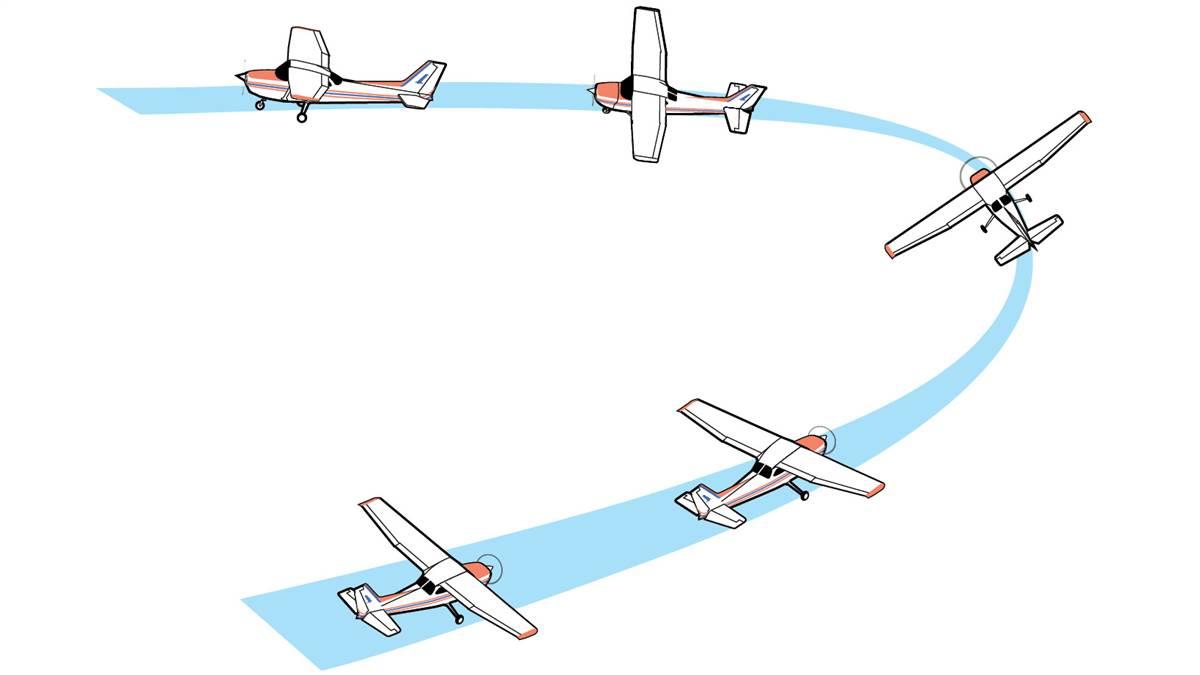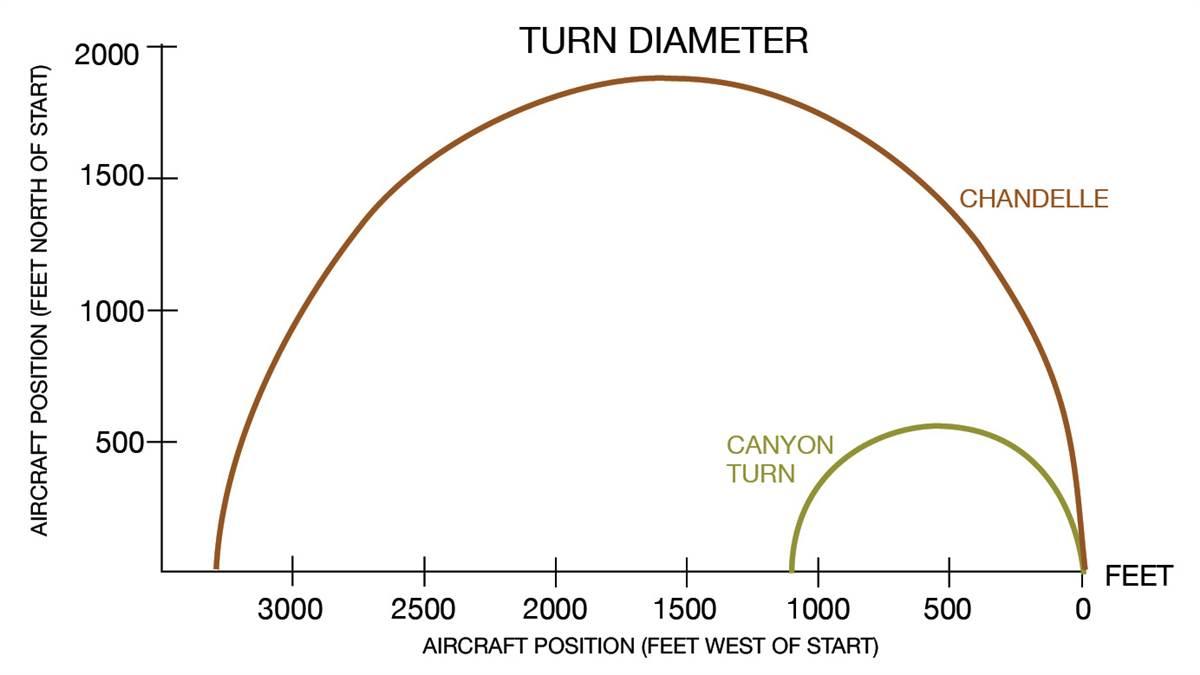Technique: It’s complicated
Performing a chandelle smoothly and effortlessly

Illustrations by Steve Karp
A chandelle is a climbing turn, performed in the clean configuration, with a 180-degree change in course. It begins near the maneuvering speed of the aircraft and finishes close to its stalling speed. The first half of the chandelle features a constant bank attitude and increasing pitch attitude. During the second half of the maneuver, the pitch attitude stays constant and the bank continuously decreases to a level attitude.
The procedure for a chandelle goes something like this: Find a long, straight road and fly directly across and beyond it for half a mile or so. At maneuvering speed, smartly yet smoothly roll into a 30-degree bank, neutralize the ailerons and pull back on the yoke. As the nose of the aircraft passes through the horizon, add climb power and continue the pull until the aircraft is parallel to the road. In the second half of the maneuver, the bank is continually relaxed until the wings are level and the aircraft is headed directly at the road once more. During this phase, maintaining a constant pitch angle necessitates pulling back on the yoke due to decreasing airspeed and control effectiveness. Hold the aircraft near a stall for a few seconds before lowering the nose for the recovery. It may take a few attempts to find the correct rate of pull-up during the first half so that the aircraft nears a stall just as the wings are once again level at the end.
The chandelle is a beautiful maneuver but, by any obvious metric—small turn radius or gain in altitude—it is not a maximum performance maneuver.
There is a lot going on in this maneuver. As the aircraft slows through various airspeeds, the pilot must continually adjust for the overbanking tendencies. Interestingly, if a pilot pulls back on the yoke, being careful not to introduce roll, the bank angle with respect to the horizon will naturally increase beyond 30 degrees. (If that seems suspicious, try the maneuver using a model airplane and you’ll witness the phenomenon.) When my airplane is parallel to the road, the bank angle is typically 45 degrees. The Airplane Flying Handbook says the bank should stay at 30 degrees during the first half of the maneuver, and performing the chandelle this way requires actually relaxing some bank—as well as a gentler initial pull on the yoke—so that the stall is not encountered too soon. With continually increasing angle of attack, the left turning tendencies become pronounced and compensating for them will be very different in a chandelle to the left compared with one to the right.

Any authoritative use of controls should be effected at or below the maneuvering speed of the aircraft, and you probably don’t want to use the value placarded on your panel as it likely is based on maximum gross weight—and maneuvering speed decreases with weight. For example, the maximum gross weight maneuvering speed for my Beechcraft Bonanza is 132 KCAS but when I’m flying the airplane by myself with reduced fuel, it drops to 114 KCAS. A good rule of thumb says that for every 2-percent drop in weight, maneuvering speed decreases by 1 percent.
The chandelle is a beautiful maneuver but, by any obvious metric—small turn radius or gain in altitude—it is not a maximum performance maneuver. Reversing course with a small turn radius would necessitate a greater bank angle (see “Take it to the Bank,” May 2020 AOPA Pilot). And most of the maneuver is not flown at the best rate of climb speed, and climb rate suffers dramatically once the airspeed decays below VY.
The technique to reverse course in the box canyon typically involves a steep turn at the slowest possible airspeed to execute a tight turn. Because stall speed increases with the load factor, a level turn with steep bank angle will require a faster airspeed in order to avoid a stall. If losing some altitude is an option, then the turn radius can be decreased by using a very steep bank and allowing the aircraft to descend in the turn. With a smaller load factor, a slower airspeed can safely tighten the turn even more. Finally, turning into the wind allows the footprint of the maneuver to become smaller still. The figure above compares the no-wind turn radius for the chandelle and the level box canyon turn for the Beechcraft Bonanza. The chandelle should not be considered as a way to exit a confined area, especially if high density altitudes have produced poor climb rates and descending isn’t an option.
One of the knowledge items listed in the Commercial Pilot Airmen Certification Standards requires that the candidate explain the purpose of the chandelle, but the FAA references don’t provide one. My personal take is that it’s a complicated maneuver with changing pitch, bank, and power. The pilot exerts authoritative control over the aircraft but does so smoothly so that a passenger feels comfortable. It’s an outside-reference maneuver with the pilot continually scanning for traffic. Mastering the chandelle provides good evidence that a candidate deserves the commercial pilot certification.


